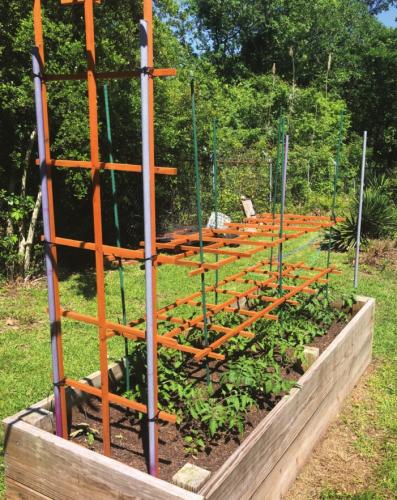Growing Your Own

Check out these basics for what and where to plant in your garden in our region
During World War II, people across the nation began growing gardens at home to support the war effort overseas. Many of these people were firsttime gardeners who had limited knowledge and space but still wished to do their part. From that time forward, the term “victory garden” has been stamped into American culture. Today, we are not fighting a world war but rather battling a global pandemic. During this time, many people are starting gardens for the first time, while others are expanding their hobby. Questions arise for first-time gardeners, and one of those common questions begins with what is needed to garden at home successfully?
 Growing a garden is a great way to bring beauty, food and happiness into your life. Several important factors must be considered before starting a garden. These include size, location, type, amount of sun, water and accessibility.
Growing a garden is a great way to bring beauty, food and happiness into your life. Several important factors must be considered before starting a garden. These include size, location, type, amount of sun, water and accessibility.
The location of the garden should be based on the factors mentioned above, the most important of which is the amount of direct sunlight the garden receives each day. Most vegetable plants require around eight hours of sunlight a day for optimum productivity. While a garden might look great in your side yard, if that area does not receive enough direct sunlight, then the plants will show a reduction in yield. Next, think about access to supplemental irrigation water. In general, most plants require an inch of water per week to grow and develop properly. Find a location for the garden within relative proximity of a water source. The garden may need to be irrigated during times of drought.
There are different ways to create a garden, and all depend on personal needs and the amount of space available at each site. Generally, there are three types of gardens: in-ground, raised beds and container gardens. Any of these can be used to create the perfect gardening area.
With in-ground gardens, ground prep is the key. Remove vegetation from the area where the garden will be located. This can be done with a shovel and rake, covering with cardboard, or by using nonselective herbicides. Covering the area with cardboard or related materials blocks sunlight and will work to clear vegetation over time. Some herbicides can take two to three weeks until the full result is achieved. Refer to the product label for specific information on how to use it properly and effectively. Next, take a soil sample and send it to the LSU AgCenter Soil Testing Lab. The routine soil test option provides essential information along with tailored recommendations for your garden.
With raisedbed gardens, there are several materials available to construct the bed. Some of the common materials used include cinderblocks, landscape stones, galvanized steel and treated lumber. Studies have shown that treated lumber is safe to use in vegetable production. Whichever material is selected, build the garden bed eight to 12 inches tall, allowing space for healthy root development and improving the water-holding capacity of the soil. Build beds no larger than four to five feet wide so that it is easy to access the planting area. Large, square shapes limit the ability to reach the center of the garden.
Container gardens are essentially the same as raised beds and come in many different shapes, sizes, colors and materials.
To fill containers or raised-bed gardens, contact your local nursery or garden center to learn what products are available. To determine the total volume of soil needed to fill the garden, take three measurements: length, width and depth. Measure each in the same unit (feet) and multiply to determine total volume. An 8 feet by 4 feet garden that is one foot (12 inches) deep has a total volume of 32 ft 3 . Garden soil can be purchased in bulk or in bags. Bulk soil is usually sold by the yard (27 ft 3 = 1 yd 3 ). The 32 ft 3 raised-bed garden has a total volume of 1.2 yd 3 . There are several calculators online to help gardeners with math when it comes to converting units and calculating volume.
Once beds are completed and filled with soil, it is time for planting. The Louisiana Vegetable Planting Guide, LSU AgCenter Pub 1980, is a wonderful resource with information needed to grow a garden from start to finish. You will find info on planting dates, recommended varieties and plant spacing. Once you have a planting plan in place, check out the local plant nursery or garden center to see what they have available.
The above-mentioned publication, as well as several others on various garden topics, can be found online, or you can contact your local parish extension office for more information. To contact the LSU AgCenter Northwest Louisiana Regional Horticulture office while the stay-at-home order is in place, email Mark Wilson at mawilson@agcenter.lsu.edu.
Mark A. Wilson is a native of Louisiana with bachelor’s and master’s degrees in horticulture from Louisiana State University. He is currently employed by the LSU AgCenter as the northwest regional horticulture specialist, regional master gardener coordinator and regional product safety alliance trainer. He is a resident of Shreveport – Bossier.
